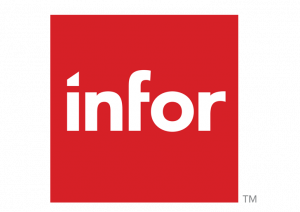For years, government experts have been anticipating the mass retirement of baby boomers in the public sector. Now, in 2018, it seems that time has come. During the “retirement tsunami,” a record number of employees will head into retirement, which leaves a huge vacuum of knowledge and insider information across public sector industries. How can agencies bridge the knowledge gap by hiring and retaining top talent?
In a recent GovLoop online training, panelists discussed the importance of cultural fit for employee retention as well as the possibility of using artificial intelligence (AI) to reduce employee turnover and fill open positions. Panelists included:
- Nikhil Deshpande, Chief Digital Officer for the State of Georgia
- Dan Evans, Assistant Director of Operations for Gold Cross Ambulance
- Patrick McKittrick, General Manager of Infor Talent Science
The Importance of Workplace Culture
Over the last 20 years, the government workforce has been getting older, but Deshpande believes that culture is key to retaining employees and creating a future-ready workforce. “You can have an amazing strategy, but if your culture doesn’t support it, it won’t be effective,” he said. Deshpande shared a few critical aspects of workplace culture that organizations need to evaluate:
- Comfort and workspace mobility: “Leaders of an organization can convey their values and priorities as someone leading a particular team,” Deshpande said. “My team can work late or come in early as long as the work is done.” Deshpande explained that giving employees freedom to dress comfortably or telework when appropriate can increase company morale.
- Diversity: “Diversity is important when it comes to the overall future and health of the team,” Deshpande said. Deshpande linked the gender and ethnic diversity of his team to better outcomes. “Everyone brings in a different viewpoint and when you start talking about services that affects civilians, it makes a difference that we reflect a sample of the overall population and that the opinions at the table are truly unique and diverse.”
- Empowerment: “Within my team, I want to make sure that everyone feels that sense of ownership, purpose and mission,” Deshpande explained. “You want people to feel that they can make a difference and they can lead.” Employees feel most empowered when they understand their position within an organization as well as how their work contributes to the mission. “Anyone who feels like they’re not empowered will start to check out,” Deshpande explained. “If you want people to have all hands on board, you have to empower them.”
- Compensation: Proper compensation can be difficult for government organizations, but it is critical to retention. “Organizations have to make sure that they can pay people enough to retain them,” Deshpande said. “If employees are comfortable in their workplace, adequate compensation will truly empower them to make a larger impact on the mission.”
Using AI to Evaluate Cultural Fit
Sometimes adjustments to workplace culture are necessary, but if a workplace is already flourishing it may be easier to find employees that enjoy the organization for what it is. Evans described how AI helped his team recruit and retain staff in the midst of an industry-wide staffing shortage.
“The shortage caught up to us in the last couple of years,” Evans explained. “Numerous schools produced licensed emergency medical technicians on a regular basis, but they were not applying to the field.”
Evans noted that his organization’s slow hiring process exacerbated the issue. “It would take 2 to 3 weeks to get an interview set up and another few weeks to hire,” Evans said. “The process was long and slow.” Due to the sluggish interviewing process, the organization lost a lot of potential hires to other companies.
“The biggest struggle, however, was employee retention,” Evans said. “This led us to evaluate our culture and figure out what we need to do to improve.”
Evans’ team turned to Infor’s Talent Science Assessment program, which gives employers the ability to evaluate the cultural compatibility of their applicants. “If someone is not a cultural fit, they will not enjoy their job,” Evans said. “When people are matched to the culture it increases retainment.”
Infor Talent Science Assessment is an AI-driven predictive analytics assessment that evaluates current and potential employees for cultural fit with a particular organization. “When creating the product, we asked how we could best leverage all of the advancements in AI to bring data into processes and be more efficient,” McKittrick said. “We collect data to understand an organization and then we use that data to improve employee engagement and turnover,” McKittrick said.
Using Infor Talent Science, an organization’s current employees and applicants take a 20-minute assessment that evaluates 39 behavioral traits such as intellect, drive, motivation and leadership style. Once data is collected on current employees, the system can use the results to evaluate applicants using the same behavioral assessment.
“When you’re interviewing candidates, you’re trying to get to know who they are in a very short period of time –usually through a resume, CV or interview,” McKittrick said. But the automated process allows employers to evaluate candidates quickly. Additionally, a requirement for certain behavioral traits can help organizations reduce the number of candidates and ensure that they are interviewing the best applicants.
“Taking the time to only interview candidates that are a fit for a culture has alleviated a lot of effort. The automated program has given us quick and efficient insight and allows us to hire the right person quickly,” Evans said. “It also removes biases and discriminatory factors by allowing the program to screen candidates for qualifications.”
After implementing Infor’s Talent Science Assessment, Operations Gold Cross Ambulance experienced an increase in retention rate and company diversity. “When a person is a behavioral fit, they are more likely to stay with the team and perform well,” McKittrick concluded.






Leave a Reply
You must be logged in to post a comment.